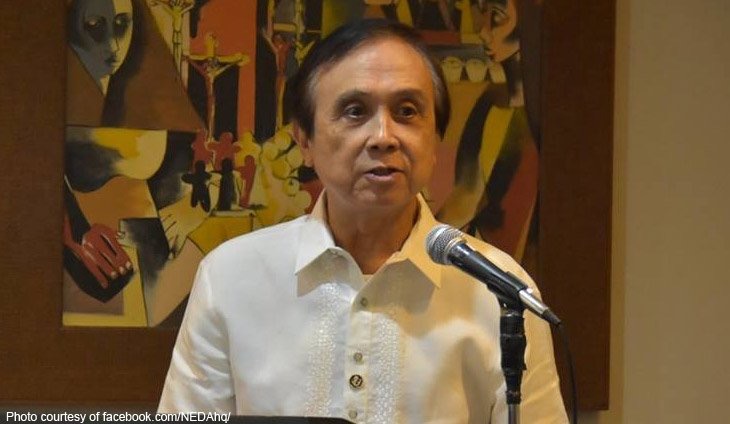The country’s chief economist on Thursday urged further opening up the manufacturing and export sectors to foreigners to make them more competitive as he expressed concern over the yawning current account shortfall caused by the widening trade deficit, which at end-November last year already surpassed the record 2017 figure.
“A widening current account balance due to rising capital goods imports and anemic exports growth is a cause for concern. The widening gap emphasizes the need to reform legislation to allow foreign investments in firms catering to the domestic market, in addition to expanding their exporting activities,” Socioeconomic Planning Secretary Ernesto M. Pernia said in a statement Thursday.
Pernia was reacting to the Philippine Statistics Authority’s (PSA) latest preliminary report showing that the country’s merchandise exports declined 0.3 percent year-on-year to $5.6 billion last November while imports sustained growth, climbing 6.8 percent to $9.5 billion during the same month.
The PSA said the surge in imports in November were led by the following products: cereals and cereal preparations; mineral fuels, lubricants and related materials, iron and steel; other food and live animals; plastics; industrial machinery and equipment; telecommunication equipment and electrical machinery; miscellaneous manufactured articles; electronic products; and transport equipment.
Philippine-made shipments to overseas, meanwhile, suffered a decline mainly due to slower sales of chemicals, ignition wiring sets, coconut oil, and electronics—the country’s biggest export commodity, the PSA said.
From January to November last year, exports fell 0.9 percent year-on-year to $62.8 billion even as the value of imported goods that entered the country during the first 11 months of last year jumped 15.8 percent to $100.5 billion.
As exports dropped while imports rose, the end-November trade-in-goods deficit reached $37.7 billion, already exceeding the $27.4-billion deficit for the entire 2017.
In November alone, the trade deficit widened to $3.9 billion from $3.3 billion a year ago.
The wider trade deficit had resulted in a ballooning current account deficit as more dollars were being spent on importation.
The current account deficit, in turn, was putting pressure on the peso, which weakened to 13-year lows last year.
Last December, the Bangko Sentral ng Pilipinas said the current account was projected to end 2018 at a $6.4-billion deficit, or over twice larger than the previous projection of $3.1 billion.
The current account deficit was seen as further increasing to $8.4 billion in 2019.
Economic managers had said that with the Duterte administration’s ambitious “Build, Build, Build” infrastructure program, demand for imports of mostly capital goods would remain robust during the near term.
To address sagging exports, Pernia, who heads the state planning agency National Economic and Development Authority urged reforming the Foreign Investment Act “to allow foreign firms to transfer manufacturing facilities to the Philippines to serve both the domestic and regional (ASEAN) markets.”
To recall, Pernia had said the 11th Foreign Investment Negative List issued by President Duterte last year contained liberalization measures that were only “marginal improvements,” citing that more could be done by amending restrictive economic laws through a number of bills pending in Congress./lzb


